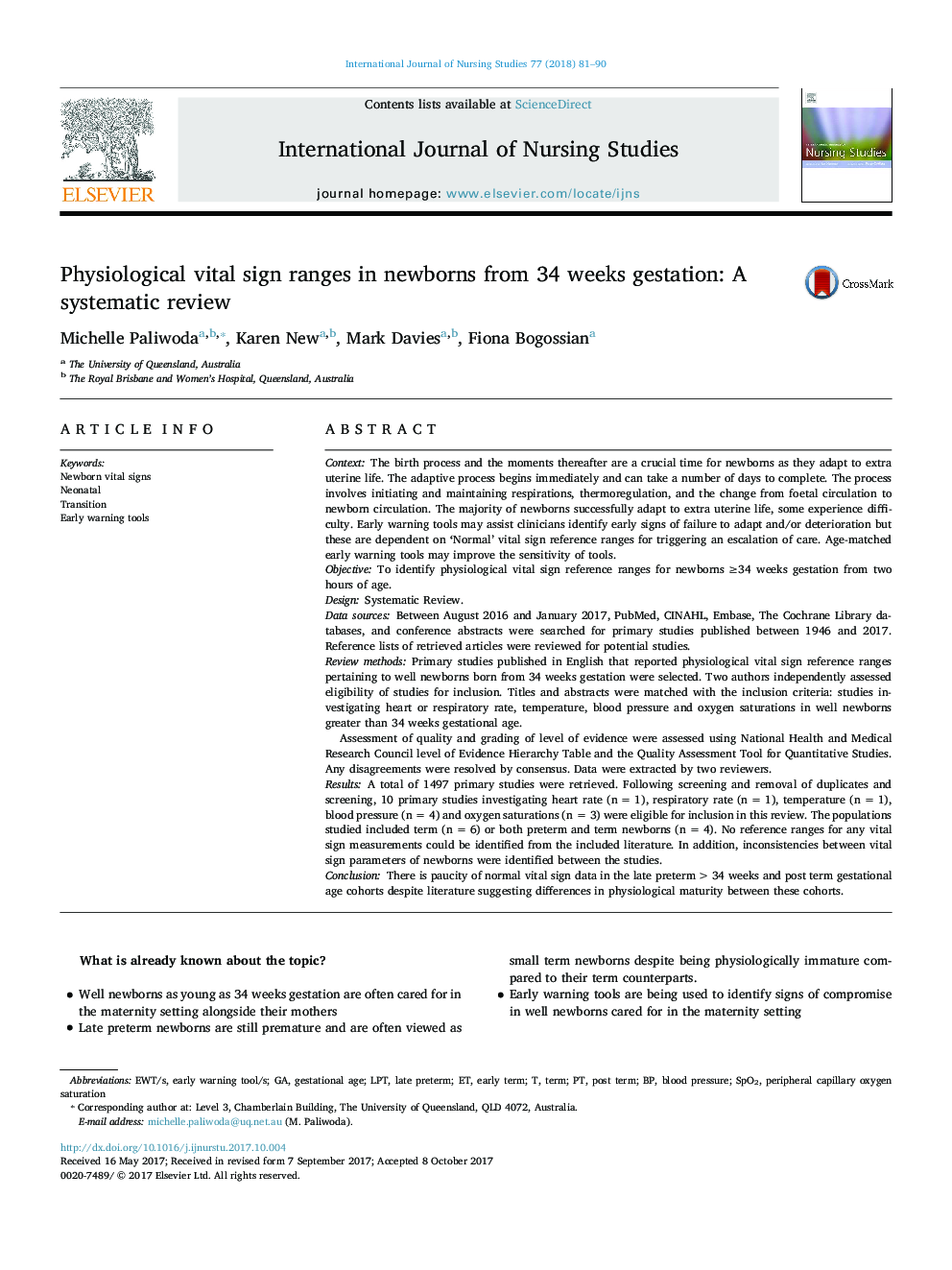| کد مقاله | کد نشریه | سال انتشار | مقاله انگلیسی | نسخه تمام متن |
|---|---|---|---|---|
| 5120923 | 1486492 | 2018 | 10 صفحه PDF | دانلود رایگان |
ContextThe birth process and the moments thereafter are a crucial time for newborns as they adapt to extra uterine life. The adaptive process begins immediately and can take a number of days to complete. The process involves initiating and maintaining respirations, thermoregulation, and the change from foetal circulation to newborn circulation. The majority of newborns successfully adapt to extra uterine life, some experience difficulty. Early warning tools may assist clinicians identify early signs of failure to adapt and/or deterioration but these are dependent on 'Normal' vital sign reference ranges for triggering an escalation of care. Age-matched early warning tools may improve the sensitivity of tools.ObjectiveTo identify physiological vital sign reference ranges for newbornsââ¥34 weeks gestation from two hours of age.DesignSystematic Review.Data sourcesBetween August 2016 and January 2017, PubMed, CINAHL, Embase, The Cochrane Library databases, and conference abstracts were searched for primary studies published between 1946 and 2017. Reference lists of retrieved articles were reviewed for potential studies.Review methodsPrimary studies published in English that reported physiological vital sign reference ranges pertaining to well newborns born from 34 weeks gestation were selected. Two authors independently assessed eligibility of studies for inclusion. Titles and abstracts were matched with the inclusion criteria: studies investigating heart or respiratory rate, temperature, blood pressure and oxygen saturations in well newborns greater than 34 weeks gestational age.Assessment of quality and grading of level of evidence were assessed using National Health and Medical Research Council level of Evidence Hierarchy Table and the Quality Assessment Tool for Quantitative Studies. Any disagreements were resolved by consensus. Data were extracted by two reviewers.ResultsA total of 1497 primary studies were retrieved. Following screening and removal of duplicates and screening, 10 primary studies investigating heart rate (n = 1), respiratory rate (n = 1), temperature (n = 1), blood pressure (n = 4) and oxygen saturations (n = 3) were eligible for inclusion in this review. The populations studied included term (n = 6) or both preterm and term newborns (n = 4). No reference ranges for any vital sign measurements could be identified from the included literature. In addition, inconsistencies between vital sign parameters of newborns were identified between the studies.ConclusionThere is paucity of normal vital sign data in the late preterm >34 weeks and post term gestational age cohorts despite literature suggesting differences in physiological maturity between these cohorts.
Journal: International Journal of Nursing Studies - Volume 77, January 2018, Pages 81-90
